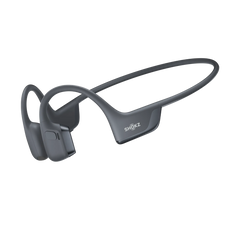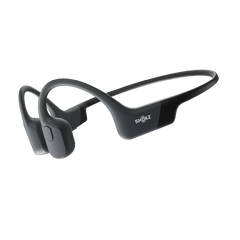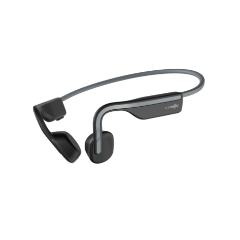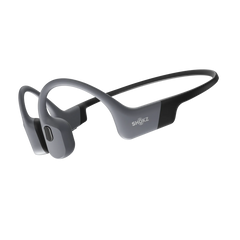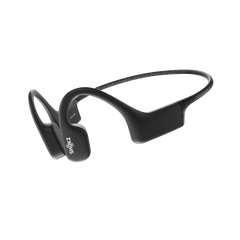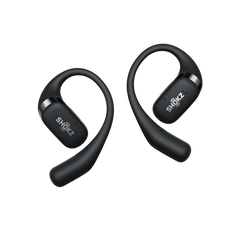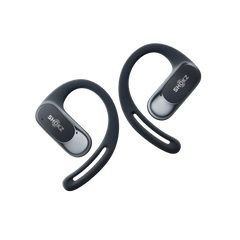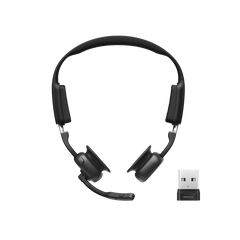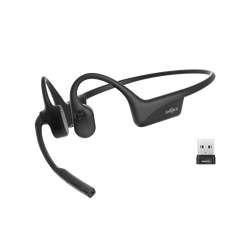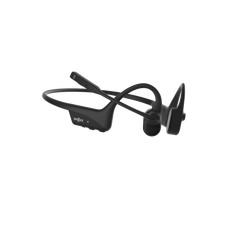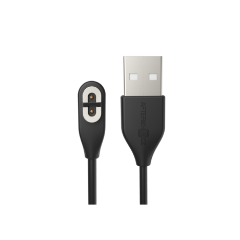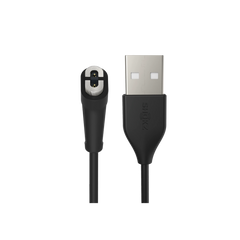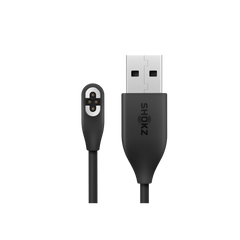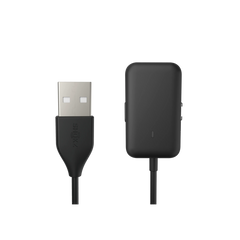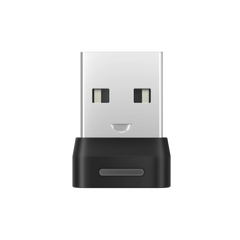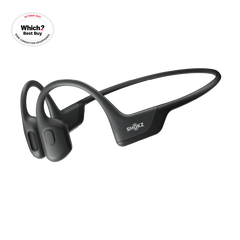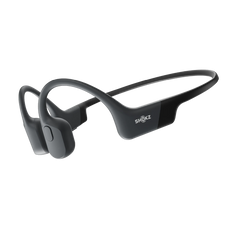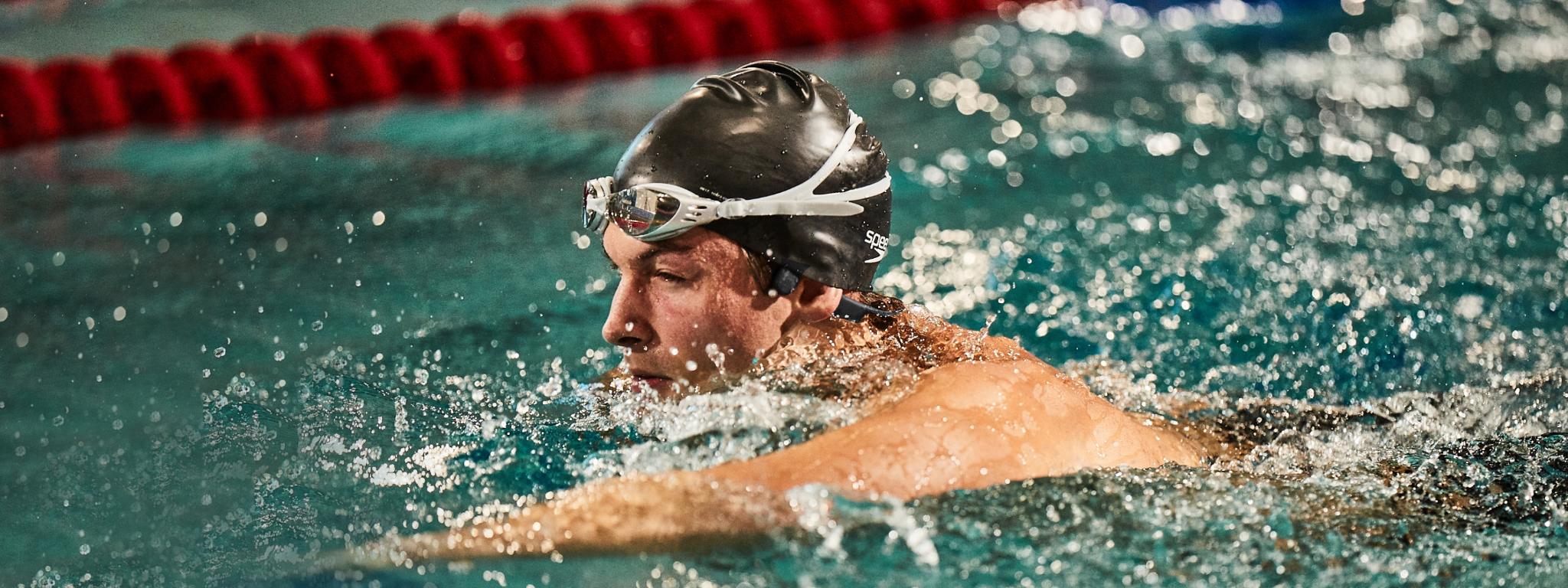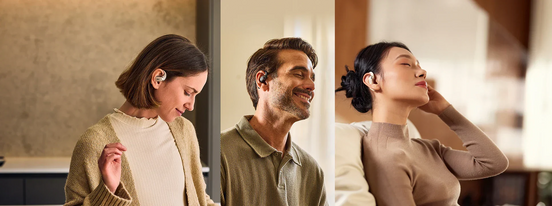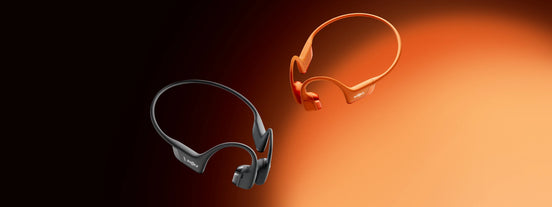Swimming with headphones seemed impossible just 20 years ago. But technological advancements, like waterproof design features and bone conduction technology, have made them a reality. This new technology means swimmers get high-quality sound, even underwater. Here's a closer look at how swimming headphones work, their features, and their benefits.
Can You Wear Headphones While Swimming?
Traditional headphones are great, but they tend to suffer when exposed to water. Water damages their electronic parts, sound waves don't travel well in water, and water blocks Bluetooth signals. These limitations prevent athletes from using traditional headphones while swimming.
Headphones designed primarily for swimming are waterproof to protect the device’s electronic components. Shokz OpenSwim (former Xtrainerz) takes open-ear listening to new depths. The IP68 waterproof design withstands total submersion in up to 2 metres of water.
How Waterproof Bone Conduction Headphones For Swimming Work
Waterproof bone conduction headphones for swimming are a game-changer in the world of aquatic sports and leisure activities. They employ a unique approach to sound transmission that sets them apart from traditional headphones.
Instead of speakers that cover or fit inside your ears, bone conduction headphones transmit audio via a pair of transducers that rest on your cheekbones, leaving your ears uncovered and ear canals unblocked. By sending vibrations through your cheekbones to your inner ears, the vibrations bypass your eardrums and middle ear completely. It's a technique that was originally developed for hearing aids to help those with hearing loss, but it also has huge advantages for active people and athletes.
A key advantage of these headphones is their high IP (Ingress Protection) rating, indicating strong resistance to water and dust. For swimmers and water sports athletes, choosing devices with an IPX7 or IPX8 rating is essential. These ratings guarantee that the headphones can be submerged in water for prolonged periods without damage.
Safety is another key benefit. With nothing blocking or plugging your ears, you are completely aware of your surroundings. You can experience great sound quality with your chosen audio, but still listen to the world around you.
Beyond their technical specifications, these headphones offer a secure fit for uninterrupted use while engaging in high-intensity water sports. They stay in place regardless of the activity, providing a worry-free experience.
How Do I Listen To Music While Swimming Underwater?
Sound vibration doesn't travel well through water but when music is transmitted by bone conduction it is unaffected. Using bone conduction you hear underwater audio in exactly the same way as you do when not in the pool, by the vibrations sent along your bones.
Bluetooth doesn't work well underwater, so a good workaround is to use headphones with their own storage. This lets you load lots of songs right onto the headphones without connecting to your phone or MP3 player.

● Secure Headphone Fit And Listening Comfort
Bone conduction headphones offer a unique solution to common headphone discomforts. They are designed to sit above the ear rather than inside the ear canal. This prevents ear fatigue as well as eliminates the irritation often caused by prolonged use of traditional headphones.
Traditional headphones also tend to slide off or shift during vigorous activities. Bone conduction headphones, on the other hand, are engineered to stay securely in place. They have been rigorously tested to ensure they remain fixed during both competitive open-water swims and intense pool sessions.
Moreover, swimming headphones are designed to be compatible with your gear. They fit comfortably alongside your swim cap and goggle strap. To further enhance your experience, check out our quick guide on how to wear your swimming headphones here.
● Hygienic And Pain-Free Waterproof Headphones
Wearing earplugs is a common practice amongst water sports athletes to prevent ear infections. Using bone conduction headphones alongside your earplugs allows for an unparalleled audio experience without compromising ear health.
This means that even with earplugs in, the audio clarity remains unaffected. It also reduces the risk of developing conditions such as 'swimmer's ear.'
● Wherever There Is Water, There Is Sound
Swimming headphones aren't just for pools. They are safe to use in open water like oceans and lakes. These headphones are fully waterproof and submersible, designed to endure all types of environments. Subjected to a rigorous 72-hour salt spray test, they showed no signs of corrosion, proving their durability in sea water just as much as on land.
With a waterproof rating that ensures functionality in up to six feet (1.8 meters), they are suitable for various water activities, including surfing, wild-water swimming, and canyoning. They can also be used for relaxed settings, like taking a bath or showering after your workout.
How Do You Take Care Of Your Swimming Headphones?
Although swimming headphones are designed to be sturdy, caring for them is critical. Doing so not only extends their lifespan but ensures you'll enjoy high-quality audio whenever you're in the water. Here are some ways you can care for your swimming headphones.
Make it a habit to clean your headphones thoroughly after use. Rinse them with fresh water to remove any dirt, chlorine, or salt. Then gently wipe the headphones dry with a soft, non-abrasive cloth. Avoid using harsh chemicals or rough materials for cleaning, as these can harm the headphones' exterior and internal components.
Wipe your headphones and allow them to air dry completely in a well-ventilated area at room temperature. Refrain from using artificial heat sources, such as hair dryers or even direct sunlight, to accelerate the drying process. Exposing the headphones to excessive heat can weaken or damage their parts. When the headphones are dry, carefully store them in their case in a cool, dry place.
Always handle your headphones with care. Be gentle when turning them on and off or when adjusting their fit to avoid any unnecessary strain on the device. Regularly inspect your headphones for any signs of wear and tear, such as cracks or degradation of the material, to address potential issues promptly.
Have Your Music To Go!
Take open-ear listening to new depths. Swim, run, cycle and train harder than ever before with open-ear headphones. Experience the freedom of open-ear audio without compromising on performance. Explore our diverse range of headphones and find your perfect training partner.
Author Information

